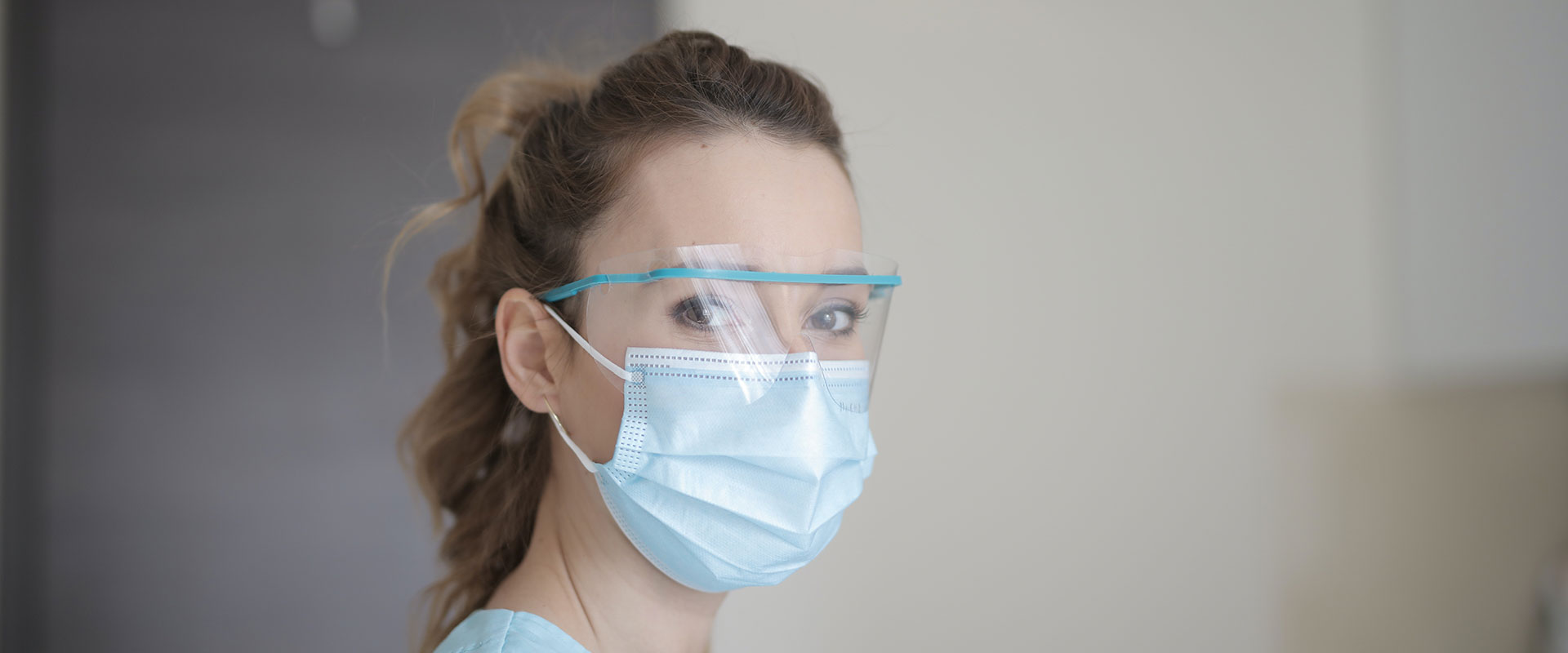Did you know that about 3% of the air you breathe came from other people’s lungs—if you’re sharing a room with them, at least. That’s kind of gross, if you think about it. We don’t use each other’s toothbrushes, share the same coffee cup or silverware. Yet we do share the same air, every single day.
In office buildings, schools, restaurants, stores… wherever we share space with other people. If you’ve offered a cup of water to your child, and they’ve backwashed after their sip, the last thing you want is to keep drinking from that cup.
Now imagine breathing the equivalent of other people’s gaseous backwash. Ew. If no one’s sick, it’s not that big a deal. But how often during flu or cold season, for example, does a cold or virus make its way through the office or a classroom?
We know that air can transmit pathogens. We also know the amount of fresh air we breathe can help reduce our chances of catching someone else’s germs. Most buildings—especially older ones—aren’t well ventilated. Those designed to allow in more fresh air, however, help keep airborne germs from infecting multiple people. Unfortunately, U.S. building codes don’t require a level of ventilation that requires maximum outdoor air intake for new construction.
Importance of Air
Before the pandemic, CRE developers and interior focused on other amenities to attract employees and increase the attractiveness of workplace environments. Onsite gyms, coffee shops, ping-pong tables, and comfy modular furniture received the most attraction. Few employers thought much about ventilation.
And yet it’s an incredibly important engineering control for indoor environments. Comfortable air quality and temperature helps employees focus on tasks. Good ventilation supports decision-making skills, energy, concentration, stamina and more, because lower CO2 levels and higher fresh air and O2 levels allow the brain to perform at peak levels.
A Harvard study, in fact, found a direct connection between how better air quality enhances decision-making performances. Those in the study exposed to lower levels of CO2 (600 ppm) were more productive and could strategize at higher levels. Employees working in green-certified buildings also performed better on cognitive tests than people working in standard or older buildings.
Ever hear of people who are allergic to their environments? It’s not a fallacy. Poorly ventilated air can lead to difficulty breathing, eye irritation, or inflammation. It’s also associated with sick building syndrome (SBS), defined as “describing a situation in which the occupants of a building experience acute health- or comfort-related effects that seem to be linked directly to the time spent in the building. The complaints may be localized in a particular room or zone or may be widespread throughout the building.”
Improving Building Environments
Upgrading HVAC systems not only helps keep building occupants healthy, it also helps regulate energy costs. A variety of options exist to balance energy requirements while ensuring good ventilation:
- Energy recovery ventilation systems (ERV) transfer temperature and humidity from exhausted AC air to incoming fresh air.
- Demand-controlled ventilation includes CO2 sensors that calculate airflow in real-time, adjusting ventilation as needed based on number of people in a room, for example.
- Variable speed compressors have hundreds of speed settings which, when used with variable blowers, allows a system to more precisely control airflow and temperature.
Controlling humidity is important, too. Too much moisture can lead to bacterial growth, fungi, mites, mold, and viruses. Too little moisture isn’t good either. After all, our bodies are 60 to 80% water. We need some moisture in the air or we’re more prone to suffer from asthma, bronchitis, irritated and itch eyes, or nosebleeds. Air that’s too dry also makes it easier for viruses—like COVID-19—to survive longer and spread more easily.
We’ve seen many discussions about what post-pandemic office spaces will look like. Some experts predict the most important amenity of all won’t be free beer Fridays but clean air which, honestly, should’ve been top priority forever.
The U.S. has an engineering guideline called “acceptable indoor air quality,” governing the amount of air coming into a building. Chances are more people have changed their thinking to expect—even demand—the best air quality. And today’s engineering and technology makes it possible to design buildings that optimize human health—including by implementing air systems that can help stop an airborne respiratory virus that spreads easily indoors.
A recent article in Science magazine discusses how recognizing the way in which respiratory infections transfer from person-to-person should lead to a shift in how we prioritize cleaning up air, saying, “In the 21st century, we need to establish the foundations to ensure the air in our buildings is clean…just as we expect for the water coming out of our taps.”
Except for hospitals and clinics, buildings typically aren’t designed to limit the spread of infectious diseases. Architects have opted to create airtight buildings which operate with exceptional energy efficiency—but with a serious downside: trapping and concentrating indoor pollutants, whether the fine particles from an inkjet printer to the chemicals gassing off rugs, furniture, and cleaning agents, to the air we exhale from our lungs.
Fortunately, just as cars need—and get—tune-ups, buildings qualify, too! Whether it’s replacing older HVAC equipment to upgrading (and changing) filters more frequently, building owners and employers will see a strong ROI because we know better air quality will help protect employees from contracting not just COVID-19 but any airborne illness. Fewer people calling out sick means less lost productivity.
As people return to their offices and public workplaces, they’re right to be concerned about their work environments. Antibacterial hand sanitizer stations, touchless lights and doors, and staggered work schedules help, sure. But better ventilation and filtration will also help to maintain everyone’s health and productivity.
At CREA United, we take an organic approach to networking, and our members include professionals working with some of New Jersey’s premiere environmental services providers. Talk to one of our members today, including Edward Alonso of Whitman, Rick Burke of Becht Engineering BT, and Anthony Pagnotta of Gilsanz Murray Steficek, who specialize in environmental consulting if your building needs an HVAC upgrade or an air quality audit.

